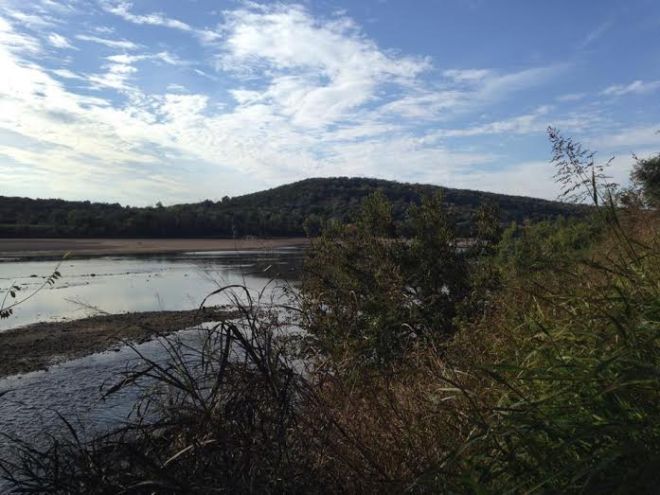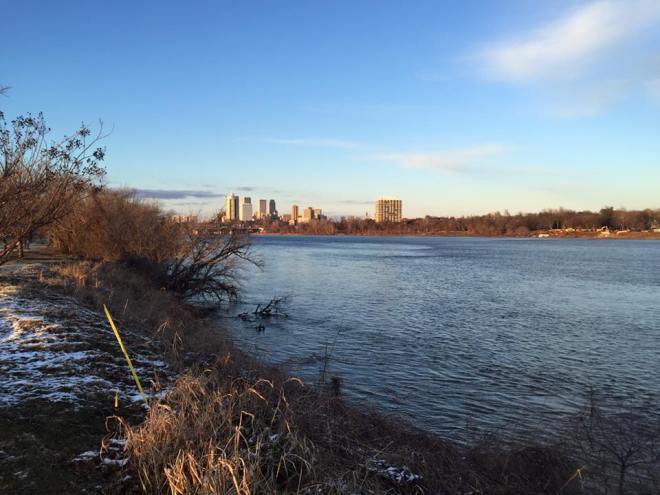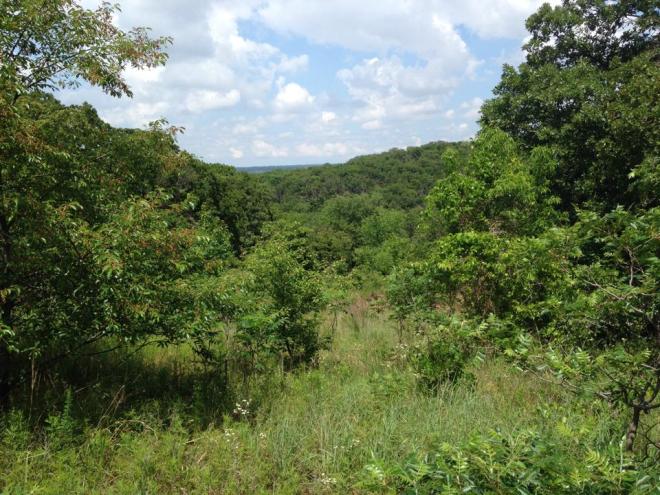
Turkey Mountain and the Arkansas River in Tulsa. Two natural resources that people are starting to value more.
Man, how things have changed over the course of less than four years.
The news out of Tulsa this week was overwhelmingly good when it comes to the status of Turkey Mountain. On Thursday, the city of Tulsa and the George Kaiser Family Foundation donated 400 acres at Turkey Mountain to the Tulsa River Parks Authority. The move triples the size of RPA’s holdings at Turkey Mountain, and together with a 50-year master lease set up late last year, the future of Turkey Mountain seems more secure than ever before.
That future appears in line with what Turkey Mountain’s users, stakeholders and managers have laid forth: that the park will remain an open green space left in a natural state. Turkey Mountain is loved by trail runners, mountain bikers, hikers and nature enthusiasts, and is known as one of the finest mountain biking trail systems in the country. It’s an asset that has grown in popularity, as can be seen in the increasing number of visitors.
But back in 2014, this seemed in doubt. Simon Properties sought to build an outlet mall on the western side of Turkey Mountain, a project that would have practically sat on top of the Westside YMCA kids camp, threatened trails nearby and caused untold traffic nightmares for years to come. Simon had allies in City Hall, including then-Mayor Dewey Bartlett.
Strong local opposition changed the trajectory of the debate, and years later, Turkey Mountain’s place as one of the city’s premier parks is set.
This brings up a bigger picture that looks even brighter, particularly when it comes to public health and economic diversification. Piece by piece, the Tulsa area’s outdoor recreation inventory is building out in a major way. So, let’s examine that, and see where it’s going.
The foundation of it is in Tulsa River Parks. Paved trail systems and open park land offer Tulsans ample opportunity to walk, run and bike, with larger fields available for team sports (rugby and soccer) and disc golf. On any given weekend, thousands of people are outside, getting exercise or relaxing by the river.

West Bank paved trail at Tulsa River Parks, near Turkey Mountain.
Turkey Mountain, with what it offers, is part of that River Parks system. Besides the daily flow of users, Turkey Mountain is also the scene of cycling races, trail running races, and even festivals. People developing a taste for trail running, hiking and biking introduce new economic opportunities for retailers who sell to people involved in these sports and activities.
On the east bank of the Arkansas River, a massive transformation is unfolding that will change the face of Tulsa’s parks system and the city itself. The $350 million Gathering Place promises to be one of the greatest urban parks in the country. It’s set to open this year, with more development continuing through 2019. There will be something for everything at the Gathering Place, and it will serve as an anchor for the park system for decades to come.
And thanks to the latest Vision Tulsa sales tax initiative, a series of dams on the Arkansas River will guarantee even water flow and good flatwater surfaces. This will open up water sports opportunities like never before. If you’re looking for what might be possible, take a look at what’s happened down the turnpike in Oklahoma City, where a prairie trickle running by downtown has been transformed into an excellent water sports destination. Flatwater kayaking, team rowing and, more recently, whitewater rafting and kayaking has been introduced in the middle of Oklahoma, spurring competitive collegiate rowing sports and attracting an Olympic training center. The transformation brought on by OKC’s Oklahoma River project can easily be duplicated in Tulsa.

Short walls that are good for bouldering, at Chandler Park.
Elsewhere in the city, the trails and wilds of Tulsa County’s Chandler Park are a hidden gem. Plenty of trail runners have discovered what Chandler Park has to offer: a series of challenging and scenic trails much like Turkey Mountain. Close to the park’s center is a series of bluffs and cliffs that are excellent for rock climbing and bouldering.
Summing it up, within the next few years you will be able to enjoy running, hiking, road biking, mountain biking, horseback riding, rock climbing/bouldering, and water sports, all within the city limits of Tulsa.
Growth of outdoor recreation isn’t confined to the city. To the north, people in the city of Claremore are reaping the benefits of the revival of a trail system by Claremore Lake. Work has been ongoing to update and expand that lake’s trail system, and Claremore Lake is quickly becoming a new hotspot for mountain bikers.
And east of Tulsa, folks in Tahlequah are upping their game as well. Tahlequah has long had ample trails to explore, and the Illinois River is well known for people who enjoy float trips, canoeing and kayaking.
A new organization, called Tahlequah Trails, is hoping to build on that, with its stated goal to “support a trail system similar to northwest Arkansas,” according to its Facebook site.
That’s a lofty goal, for sure. Arkansas is one of the top destinations in the country for mountain bikers in the know. But it’s a worthy one, considering how well Arkansas has tapped into its natural beauty to attract athletes and tourists. The state has been better than most when it comes to building its economy by offering people an active place to play.

A cyclist rides the trails at Turkey Mountain.
And that brings me to this: Northeast Oklahoma in general, and Tulsa specifically, has a huge opportunity before it. City leaders and businesses are hungry for growth, and they can find it in outdoor recreation. Nationally, the outdoor recreation economy is more than $887 billion a year, according to the Outdoor Industry Association. Yes, that’s billion with a “B.”
In Oklahoma, outdoor recreation accounts for $10.6 billion in consumer spending, $3.1 billion in wages and salaries, 97,000 jobs and a whopping $663 million in state and local taxes, according to OIA. Tapping into that economic energy has transformed other cities across the country. Communities like Chattanooga, Tenn., Boulder, Colo., Richmond, Va., and many more have diversified and strengthened their economies while upping their quality of life, thus making them more attractive to other businesses. In the case of Richmond, the presence of ample off-road cycling transformed the city’s economy and even its neighborhoods. Given the natural assets we have here, there is no reason that Tulsa can’t see similar results.

Circling back to the news of the week, we can see momentum building, piece by piece, to set the city up for success. Consolidating and preserving the land at Turkey Mountain has economic and ecological benefits that will pay forward for decades to come. Here’s hoping that we can keep this going. So much has already happened in the span of less than four years.
— Bob Doucette









